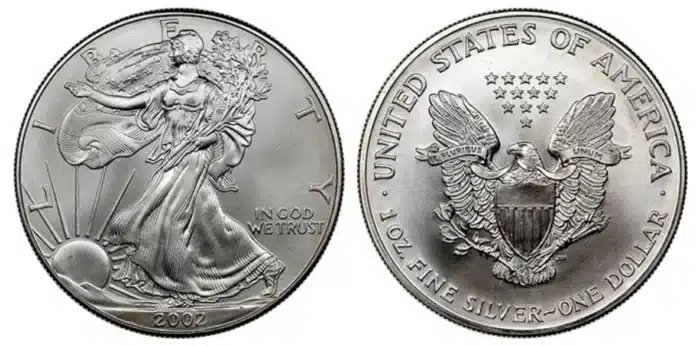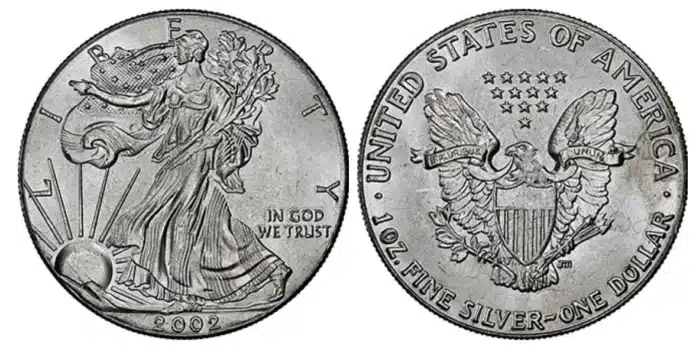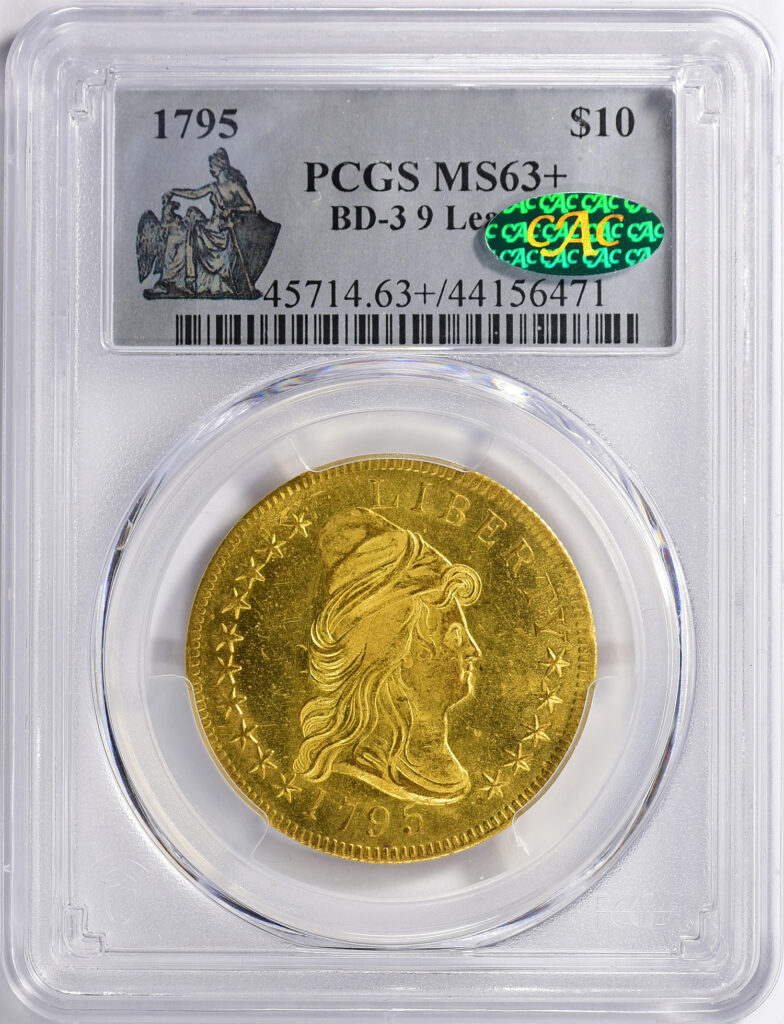By Numismatic Guaranty Company (NGC) ……
The American Silver Eagle is the flagship silver bullion coin of the United States. Its obverse features Adolph A. Weinman’s renowned Walking Liberty design used on the half dollar from 1917 to 1947. From its inception in 1986 until a design change in mid-2021, the Silver Eagle featured on its reverse a heraldic eagle motif created by esteemed sculptor and former United States Mint Chief Engraver John Mercanti.


Recently, NGC received a submission of a purported 2002 American Silver Eagle. This particular coin’s problems begin with its size. It is much thicker than expected because it was struck on a planchet made mostly of nickel and copper instead of silver, which has a much higher density. This was clever on the counterfeiter’s part, as the Silver Eagle is more likely to be weighed than subjected to metallurgical testing or have its thickness measured.

The coin also has very poor details that are especially evident upon close inspection. Look at Liberty’s outstretched hand on the obverse (above) or the letters in E PLURIBUS UNUM on the reverse (below).

The dies for this fake were probably created using a computer numerical control (CNC) machine, which is essentially a computer-controlled lathe. This process left behind some telling marks, such as lines throughout the design that are particularly visible within the shafts of the arrows on the reverse.
With 10.5 million struck, 2002 Silver Eagles are easy to acquire, and genuine Mint State 69 examples sell for well under $100 USD, so why would a counterfeiter target this coin? For one, there is still plenty of room for profit, as the fake is struck in metals that are much less expensive than silver. In addition, the forger might have seen this coin’s commonality as an asset because some collectors might be tempted to skip third-party certification or only give it a cursory glance.


